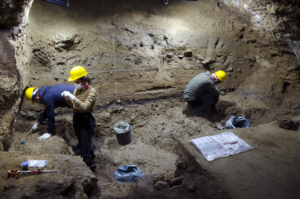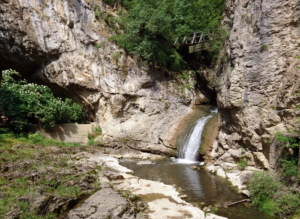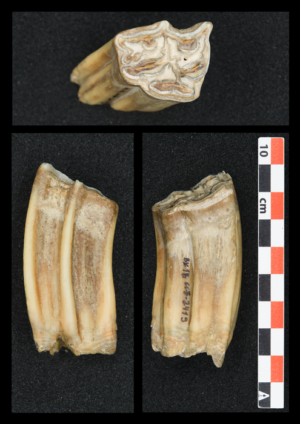
AMERICAN ASSOCIATION FOR THE ADVANCEMENT OF SCIENCE (AAAS)—As early Homo sapiens spread across Eurasia about 45,000 years ago, they may have experienced much colder climate conditions than previously thought, according to isotope analyses of animal remains from a Bulgarian cave, which also contains some of Europe’s earliest H. sapiens remains. The findings* contradict models that suggest warm climates were necessary for human expansion in the region, providing direct evidence that at least some dispersals occurred when air temperatures in the cave were 10°Celsius to 15°C lower than temperatures today. Current models based on age correlations between archaeological and climatic records propose that H. sapiens spread across Eurasia only during episodes of warm climate. However, these studies tend not to use direct paleoclimate evidence, instead generating models that correlate the ages of archaeological finds with climatic phases documented in ice cores or cave deposits. To provide direct evidence for the climate conditions during the time when H. sapiens first spread across Eurasia, replacing Neanderthals within a few millennia, Sarah Pederzani and colleagues analyzed strontium and oxygen isotopes from the tooth enamel in remains of equids and bison from the Initial Upper Paleolithic (IUP) in Bulgaria’s Bacho Kiro Cave. They used a sequential method to sample the enamel layer-by-layer, enabling them to see changes in the isotopes over short intervals of time, as the tooth enamel was deposited during the animal’s development. The strontium isotopes were stable, which showed that the animals did not migrate over long distances, confirming the suitability of the remains to help reconstruct the local climate. However, the oxygen isotopes did fluctuate, enabling the researchers to estimate changes in seasonal temperature as well as annual mean temperatures. Pederzani et al. determined that the oxygen isotope levels were much lower than those expected for the modern-day Balkans climate, aligning better with current, colder conditions in Scandinavia and Russia.
____________________________

Bacho Kiro Cave is located in a karst valley in north central Bulgaria, with small streams passing close to the cave entrance. Sarah Pederzani, MPI-EVA Leipzig, License: CC-BY-SA 2.0
____________________________

Current excavations at Bacho Kiro Cave of the 2021 season are unearthing new artifacts from the Middle Palaeolithic Neanderthal occupations. The Initial Upper Palaeolithic Layer I can be seen as a dark band in the sediment profile. Excavators are wearing masks and gloves to minimize contamination of samples that are regularly taken for molecular analyses. Tsenka Tsanova, MPI-EVA Leipzig, License: CC-BY-SA 2.0
____________________________

Excavations at Bacho Kiro Cave (Bulgaria). The excavator in the foreground is recording artifacts (each marked with a colored pin) from the Initial Upper Paleolithic Layer I. Homo sapiens bones as well as artifacts from human use of the cave, such as stone tools and a large number of animal bones, were recovered from this layer. Stable isotope analyses of these animal remains were used in this study to examine the climatic conditions during the time that humans were present at the site. Željko Režek, MPI-EVA Leipzig, License: CC-BY-SA 2.0
____________________________

High crowned horse teeth – such as the one shown here, recovered from the lower layers of the Bacho Kiro Cave sequence – were analysed for the oxygen isotopic composition of tooth enamel to reconstruct seasonal temperatures during the animal’s life. Sarah Pederzani, MPI-EVA Leipzig, License: CC-BY-SA 2.0
____________________________
Article Source: AMERICAN ASSOCIATION FOR THE ADVANCEMENT OF SCIENCE (AAAS) news release.
Summary author: Shannon Kelleher
*Subarctic climate for the earliest Homo sapiens in Europe, Science Advances, 22-Sep-2021. 10.1126/sciadv.abi4642
_____________________________
Advertisement





